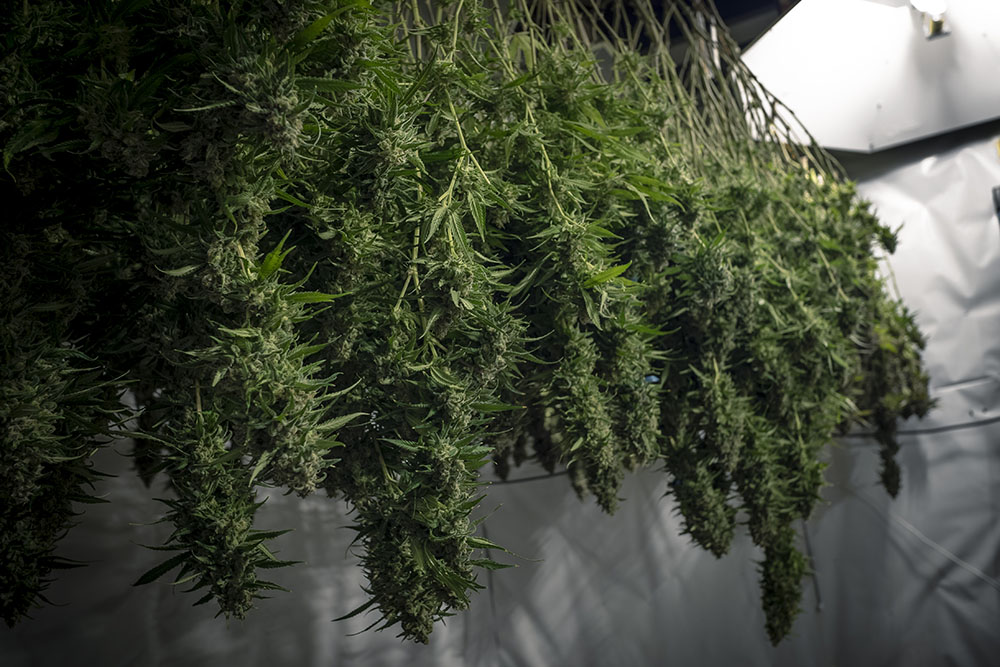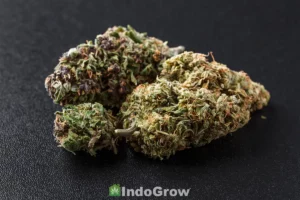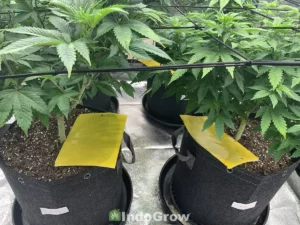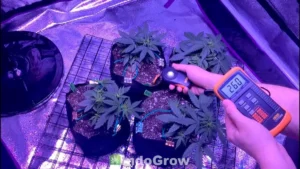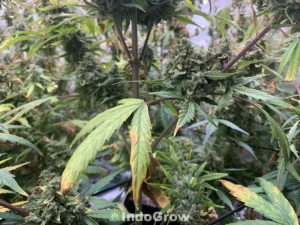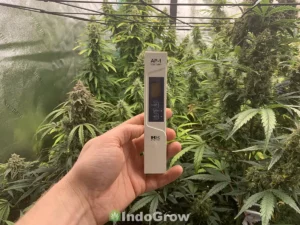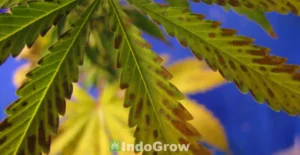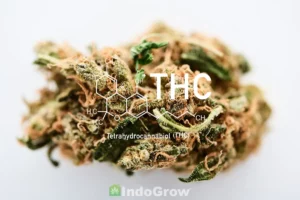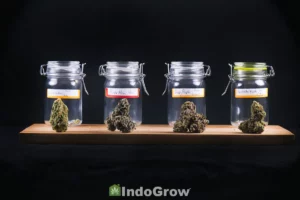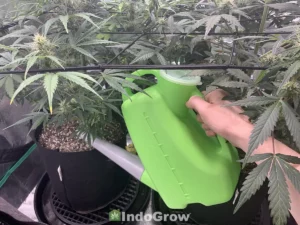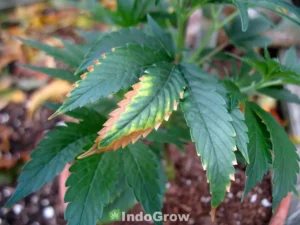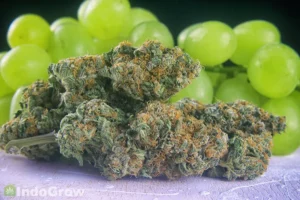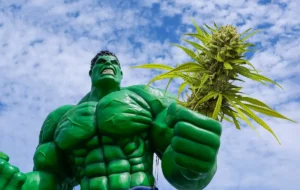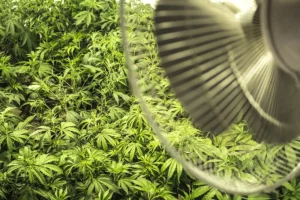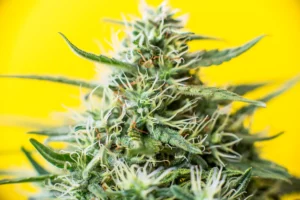When to harvest cannabis is one of the most important decisions a grower can make. When harvested too early, the bud’s trichomes will be underdeveloped. Harvested too late, and the trichomes will begin to break down. In both cases, the bud will have lower potency and a worse flavor than if it were chopped at the correct time.
Photoperiods or Feminized strains are usually ready for harvest about 5 months after planting. It can be earlier if vegging for less than 8 weeks. Autoflowers are generally ready for harvest after about 3 months. Sativas tend to mature more slowly than Indicas, but it can vary based on strain.
Rather than waiting an exact number of weeks after planting, most growers inspect the buds each day beginning in week 8 of flower to determine the optimal harvest time. Changes in the color and texture of the flower’s pistils and trichomes are the most reliable indicator of ripeness.
Table of Contents
Why is Harvest Time Important for Cannabis?
Harvesting cannabis at the peak of ripeness will ensure that the buds are as potent and flavorful as possible. When harvested too early, the plant’s trichomes will be underdeveloped. Harvested too late, and the trichomes will begin to break down. In both cases, the bud will have lower potency and a less pleasant flavor than if it were picked at the correct time.
Using Cannabis Pistils to Determine Harvest Time
The pistils, or more specifically the stigma, are the thin strands sticking out of the buds. Early in flower development, the pistils will be small and transparent or white. As the flower matures, the pistils will turn brown and begin to curl.
Because different parts of the plant are exposed to slightly different conditions while growing, the buds on a single plant may not all mature at the same rate. In many plants, the bud at the top of the plant will ripen the fastest, while those at the bottom of the plant are in more shade and ripen more slowly. The ideal time to harvest is when at least 50% of the pistils have turned brown.
What if Cannabis Pistils are Turning Brown Early?
Pistils turning brown early in the flower phase will not necessarily have a negative effect on the end crop quality, especially if what is causing the pistils to turn brown is remedied.
For indoor plants, being too hot or too close to the light source can potentially cause burning on the leaves as well as browning pistils. This will be especially apparent on buds at the top of the plant. If lighting seems to be the issue, consider moving the light source a bit further from the plant.
Another potential cause of pistils turning brown early is a lack of nitrogen, especially if you also see leaves turning yellow and falling off. This tends to be a more common cause than weather for outdoor plants. While nitrogen fertilizer is more important in the vegetative phase, adding some in the early flowering phase may keep the buds from ripening too early.
While pistils turning brown can sometimes indicate a larger issue with the plant, in some strains, the pistils simply turn brown earlier in development than others. If your plant is otherwise healthy, early brown pistils may be a part of normal development.
Using Cannabis Trichomes to Determine Harvest Time
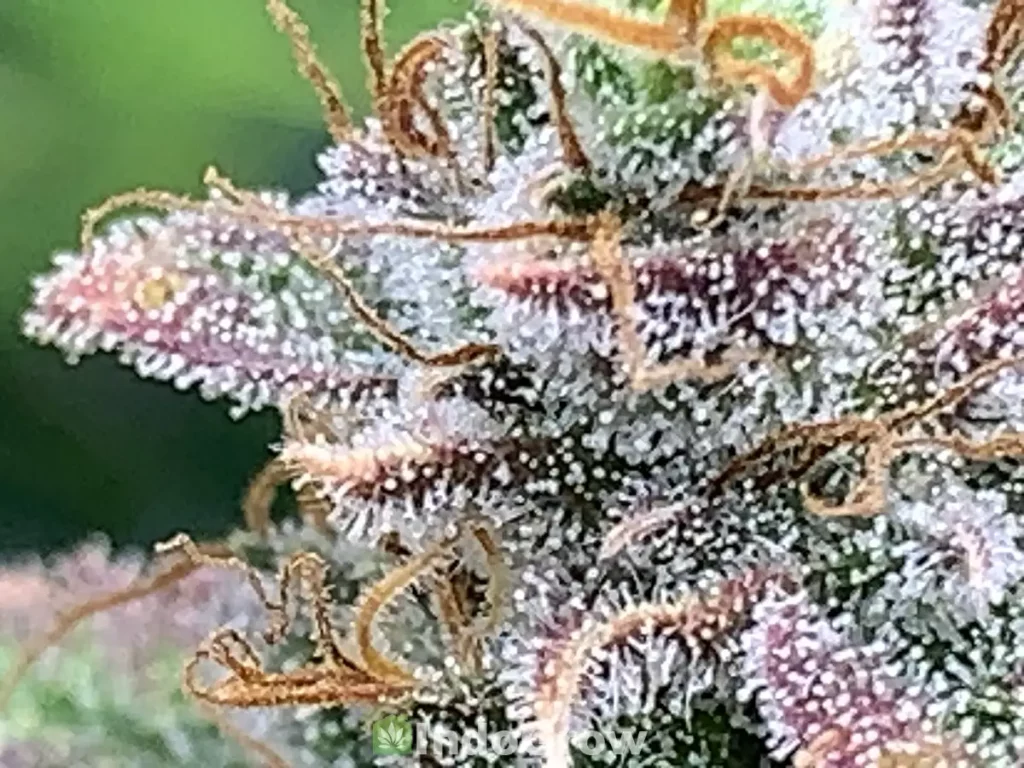
Even more reliable than looking at pistil color is inspecting the plant’s trichomes. When immature, the trichomes will be small and transparent. When approaching harvest, the trichomes will turn from clear to milky white and eventually progress to an amber color.
Cannabis is ready for harvest when there is a 50/50 mix of white and amber colored trichomes. If you prefer a more energetic and euphoric effect, aim for 75/25 ratio of white to amber. If you’re looking for a more sedative effect, then aim for a 25/75 ratio of white to amber.
Unlike pistils, trichomes are difficult to inspect with the naked eye. A handheld microscope, such as a jeweler’s loupe, can help you get a better look at your plant’s trichomes. Look for a microscope with magnification in the 30x-100x range. If you are in a pinch, a high quality phone camera might help out, although the image will not be anywhere near as clear as using a microscope.
Where on Cannabis Bud to Check for Trichomes?
If you have a handheld microscope, it can be held up to the bud directly in order to inspect the trichomes. Be sure to check more than one bud, as they may be maturing at different rates.
Some growers prefer to use a stationary microscope if they have an unsteady hand, as holding a lens up to the bud for an extended period of time can get uncomfortable. In order to check your plant’s trichomes under a stationary microscope, the grower must remove a small sample of the plant. However, removing a piece of the bud each time you want to look at the trichomes will lower your overall yield.
Therefore, the best place to sample your plant’s trichomes is the sugar leaves just beneath the main cola/bud. These will have a high density of trichomes and will ripen at a similar rate to the buds.
In comparison, trichomes on the leaves of the cannabis plant tend to mature faster than those on the flower. Additionally, the trichomes are present in a much lower concentration than on the flowers.
When to Harvest Cannabis for Different Effects?
In general, harvesting your cannabis as close to the peak of ripeness as possible will ensure it provides the best medicinal benefits and a strong high. However, some growers believe that harvesting at different times will give the bud a different feel when ingested.
Harvesting your cannabis early may produce a more mild, clear headed high, while harvesting late may give it more of a relaxing body high. In either case, the cannabis should still be harvested no more than one to two weeks early or late for best results.
Summary
Cannabis plants can mature anywhere from three to six months after planting, with 9 to 12 weeks being the average. A mixture of genetic and environmental factors can affect the rate of growth, making it difficult to know exactly when your plants will be ready for harvest. Because of this, regularly inspecting your plant’s pistils and trichomes is the most effective way to know if the plant is ready for harvest or not.
Pistils, the small filaments growing out from the flower, should progress from clear to brown and curled as the flower matures. A ripe bud should have at least 50% brown pistils as a general rule.
Inspecting your plant’s trichomes can be an even more accurate way to determine your plant’s ripeness than looking at the pistils. Because the trichomes are so small, you will need a microscope with at least 30x to 60x magnification to view them properly. A ripe trichome will be a milky white color and covered in a sticky secretion. As they age, the trichomes will become amber colored, and then dry and brown.
A bud at peak ripeness will usually have a mixture of milky white and amber colored trichomes. Because the top of a cannabis plant is generally exposed to more light than the bottom, the buds at the top may mature slightly faster than those at the bottom. You may have to harvest the plant before all buds are fully ripe in such a case.
In conclusion, harvesting your cannabis flower at the peak of ripeness will lead to buds with higher potency and better flavor. Once your plant begins to flower, be sure to check its pistils and trichomes regularly to determine the best day to harvest.

Rocky Horton
Author
Rocky Horton is an experienced cannabis grower and the founder of IndoGrow. The IndoGrow editorial team has over four decades of combined growing experience. Learn more.

